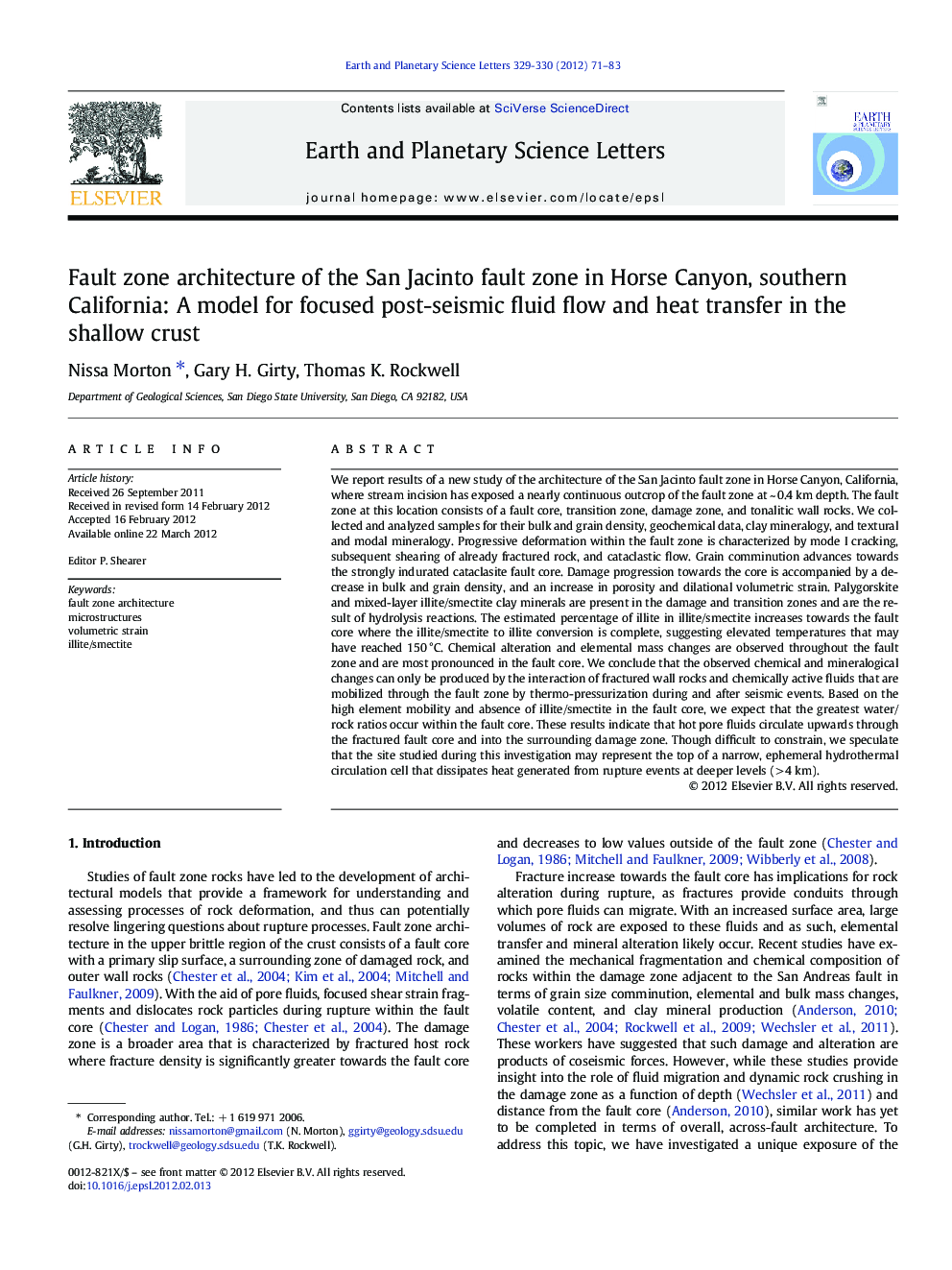| کد مقاله | کد نشریه | سال انتشار | مقاله انگلیسی | نسخه تمام متن |
|---|---|---|---|---|
| 4677537 | 1634806 | 2012 | 13 صفحه PDF | دانلود رایگان |

We report results of a new study of the architecture of the San Jacinto fault zone in Horse Canyon, California, where stream incision has exposed a nearly continuous outcrop of the fault zone at ~ 0.4 km depth. The fault zone at this location consists of a fault core, transition zone, damage zone, and tonalitic wall rocks. We collected and analyzed samples for their bulk and grain density, geochemical data, clay mineralogy, and textural and modal mineralogy. Progressive deformation within the fault zone is characterized by mode I cracking, subsequent shearing of already fractured rock, and cataclastic flow. Grain comminution advances towards the strongly indurated cataclasite fault core. Damage progression towards the core is accompanied by a decrease in bulk and grain density, and an increase in porosity and dilational volumetric strain. Palygorskite and mixed-layer illite/smectite clay minerals are present in the damage and transition zones and are the result of hydrolysis reactions. The estimated percentage of illite in illite/smectite increases towards the fault core where the illite/smectite to illite conversion is complete, suggesting elevated temperatures that may have reached 150 °C. Chemical alteration and elemental mass changes are observed throughout the fault zone and are most pronounced in the fault core. We conclude that the observed chemical and mineralogical changes can only be produced by the interaction of fractured wall rocks and chemically active fluids that are mobilized through the fault zone by thermo-pressurization during and after seismic events. Based on the high element mobility and absence of illite/smectite in the fault core, we expect that the greatest water/rock ratios occur within the fault core. These results indicate that hot pore fluids circulate upwards through the fractured fault core and into the surrounding damage zone. Though difficult to constrain, we speculate that the site studied during this investigation may represent the top of a narrow, ephemeral hydrothermal circulation cell that dissipates heat generated from rupture events at deeper levels (> 4 km).
► San Jacinto fault zone architecture in Horse Canyon.
► Increased elemental change and mineral dissolution towards the fault core.
► Illite/smectite to illite transition preserved in the fault core.
► Records of focused, hot fluid flow in the shallow crust following earthquakes.
Journal: Earth and Planetary Science Letters - Volumes 329–330, 1 May 2012, Pages 71–83